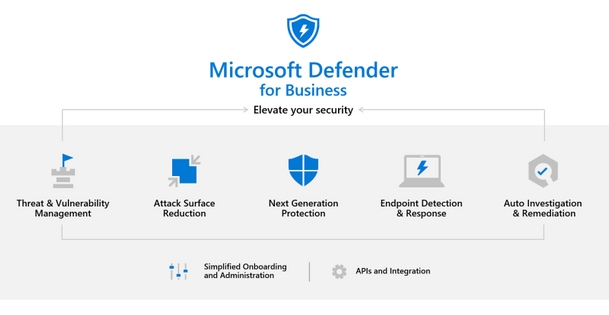According to the World Bank, Small and medium businesses (SMBs) represent 90% of the US economy and carry over 50% of worldwide employment.
Now, those are big numbers. Therefore, we should worry about the results Microsoft found in a recent survey: 70% of SMBs are worried about the business risk cybersecurity poses.
While 70% of all SMBs surveyed are worried about cybersecurity risks, 80% said they’re protected with antivirus but 93% are still concerned about threats (ransomware attacks increased by 300% during 2020).
That’s why they (Microsoft) announced the Microsoft Defender for Business this November at the Ignite 2021 event. Let’s see what it got to offer and how to get started.
What is Microsoft Defender for Business?
Microsoft’s Defender for Business is a new endpoint security solution to better protect all of your devices from malware, phishing, and many other threats that also affect small and medium-sized businesses (up to 300 employees).
They promise to have built an easy-to-use and flexible solution that guides business owners to action with both insights and recommendations of your security endpoints. According to Microsoft, no specialized knowledge is required, whether you’re brand new to the Microsoft Cloud or currently use Microsoft Intune.
So, it comes with a simplified wizard-based onboarding for Windows devices (macOS, Android, and iOS coming soon) and integrations with Remote Monitoring and Management (RMM) tools like Datto, ConnectWise, or Microsoft 365 Lighthouse for partners, as well as built-in policies to get started quickly.
Microsoft also plans to add server support later this year with an add-on solution.
You may ask: What’s included inside “Microsoft Defender”?
This stand-alone version helps SecOps teams to take care of the entire five-step cybersecurity framework created by the National Institute of Standards and Technology (NIST): identity, protect, detect, respond, and recover.
Identify
Threat and vulnerability management helps you to prioritize and focus on the weaknesses that pose the most urgent and highest risk to your business. By discovering, prioritizing, and remediating software vulnerabilities and misconfigurations, you can proactively build a secure foundation for your environment.
Protect
Attack surface reduction options help to minimize your attack surface (like the places that your company is vulnerable to cyberattacks across your devices and applications), leaving bad actors with fewer ways to perform attacks.
Next-generation protection helps to prevent and protect against threats at your front door with antimalware and antivirus protection—on your devices and in the cloud.
Detect and Respond
Endpoint detection and response provides behavioral-based detection and response alerts so you can identify persistent threats and remove them from your environment.
Recover
Auto-investigation and remediation help to scale your security operations by examining alerts and taking immediate action to resolve attacks for you.
Now, you may ask yourself what’s the difference between Microsoft antivirus and Microsoft Defender for Business?
Well, as was previously mentioned, Defender for Business includes Defender Antivirus and extends its capabilities, including “threat and vulnerability management, attack surface reduction, endpoint detection and response, and automated investigation and response.”
While Microsoft Defender Antivirus only provides malware, virus, and potentially unwanted software/files protection to Windows devices where is built-in,
How to Get Started with Microsoft Defender for Business
There’s good news for you if you’ve seriously considered getting Microsoft Defender for Business. Not only it has been released to all Microsoft 365 Business Premium customers, but its standalone license is also available at $3/month/user
You have three different options to get Microsoft Defender for Business today:
- Buy the Standalone Version:
- 1) Visit the Microsoft Defender for Business site and select “try or buy”,
- 2) Create a new account using the link you receive in your email,
- 3) Add users >< Assign license.
- Get Microsoft 365 Business Premium:
- 1) Visit the Microsoft 365 Business Premium product page.
- 2) Try or buy a Microsoft 365 Business Premium subscription.
- 3) Proceed to set up your account after receiving a link inside the email.
- Get help from a Microsoft solution provider
We know this may seem a bit complex at first if you haven’t done this or something similar before. Don’t worry, because that’s why we added useful information on the Microsoft Defender for Small & Mid-sized Businesses down below, like…
Microsoft Defender for Business REQUIREMENTS
Microsoft Defender for Business FAQs and Answers
Guide to Start Microsoft Defender for Business TRIAL
Microsoft Defender for Business Configuration (Simple + Complete)
That should be more than enough to get started with Microsoft Defender for Business.
We highly recommend getting an advanced solution like this one, instead of relying on traditional antivirus and other tools of single-layer protection.
Don’t know how or where to start?
That’s what MyITGuy experts are here for!
Just ask us any questions and we’ll reach out to help, free of cost.
